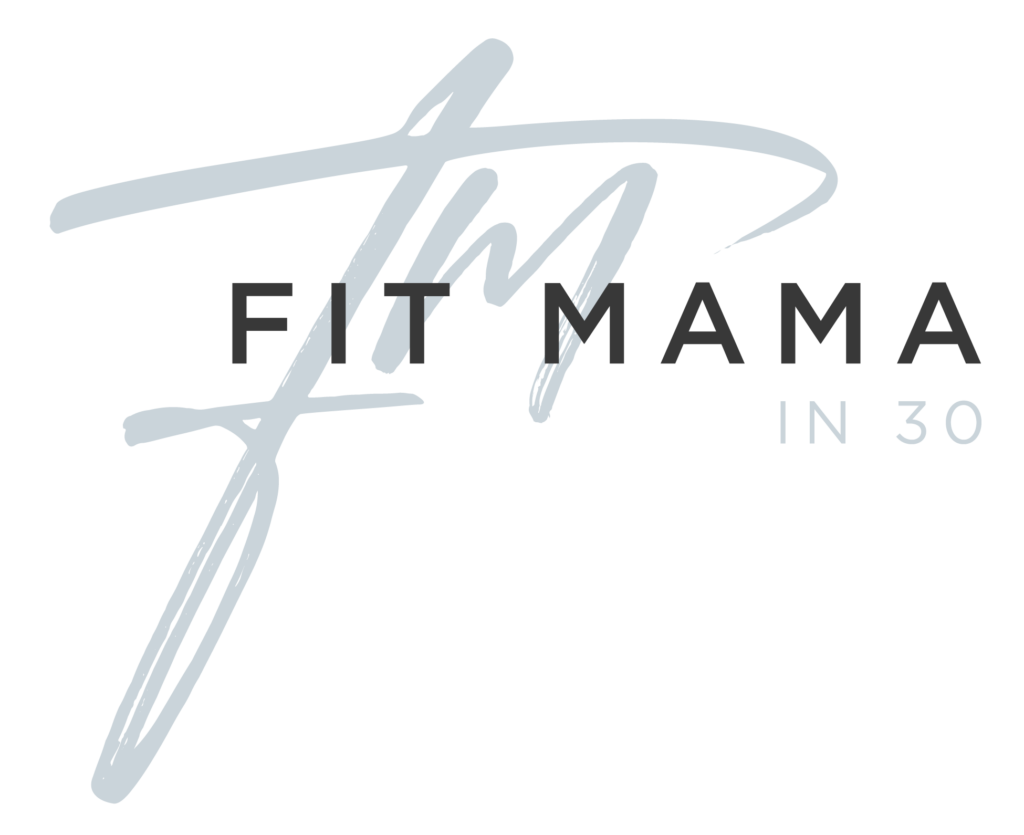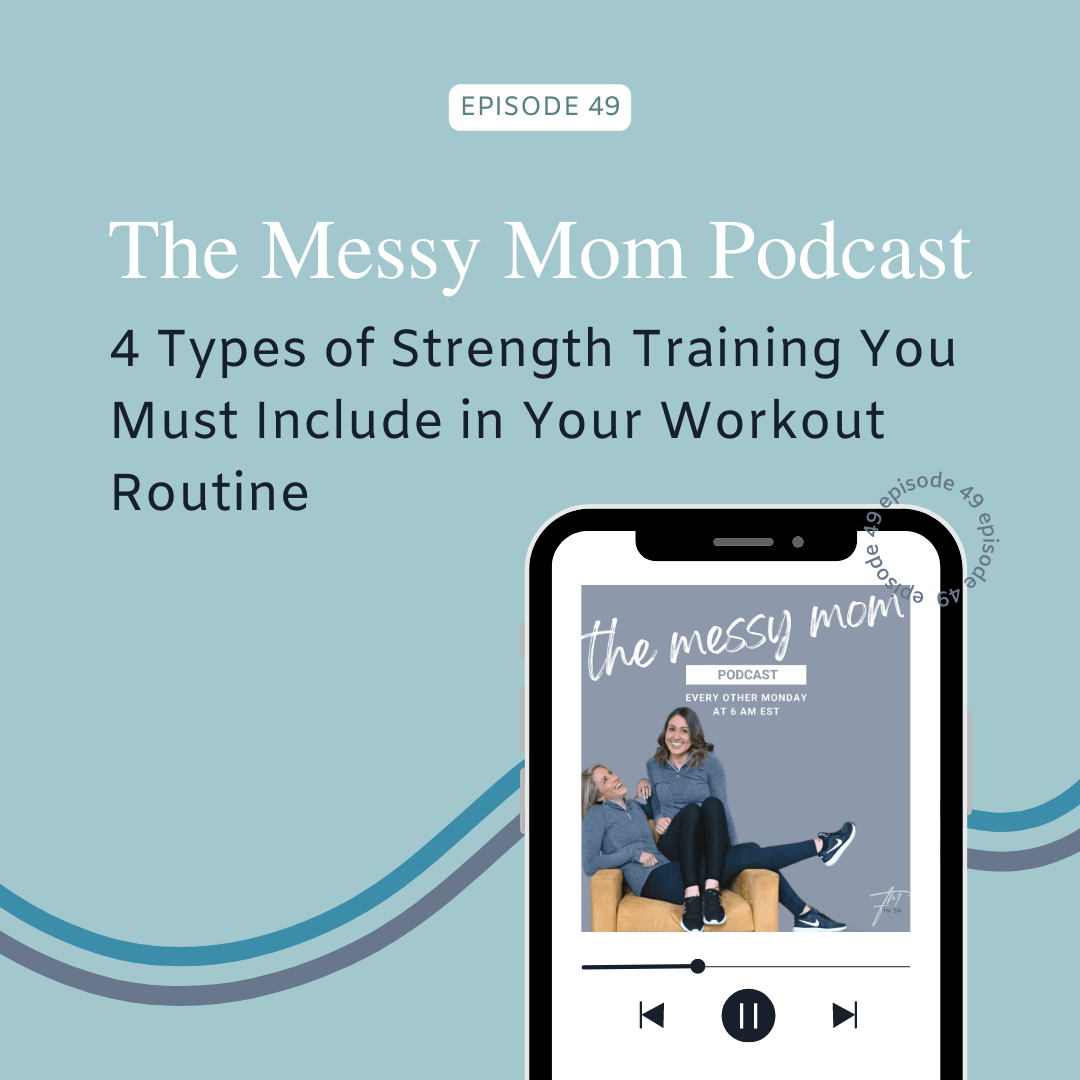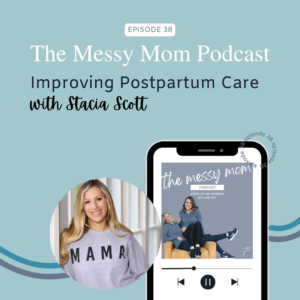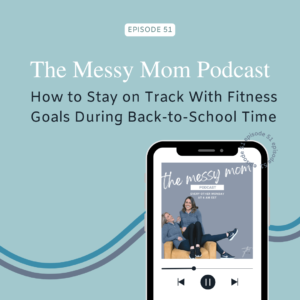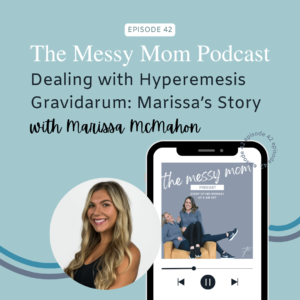CLICK PLAY TO LISTEN TO 4 TYPES OF STRENGTH TRAINING YOU MUST INCLUDE IN YOUR WORKOUT ROUTINE:
4 Types of Strength Training You Must Include in Your Workout
Hey, hey mama! It’s just the two of us in this exciting episode, and trust us, it’s a good one. We’re passionate about strength training, and if you’re not already aware, you’ll soon understand why. As co-founders of an online fitness program for women, we’ve made strength training a huge part of our approach.
Of course, you need cardio in your life but through years of education and personal experience (we’re both moms too!), we’ve come to realize the incredible importance of strength training. It’s not just about carrying your child during pregnancy; it’s about rehabilitating and recovering during the postpartum period, rebuilding your strength, and regaining to wherever you want to be.
Join us in this episode as we explore the different forms of strength training and why they’re all essential for your fitness routine. We’ll discuss seeing tangible results (which we all love!), and more importantly, how these different approaches can be seamlessly incorporated into your workout program.
Let’s get into it!
4 Types of Strength Training
1. Muscle Power
The first one we’re going to talk about is muscle power and this involves explosive movements. When it comes to workouts and resistance training, especially for females aged 25-45, we often think of HIIT training.
For women, many of the moves incorporated in HIIT workouts are explosive. Think skaters, box jumps, burpees, or plyometric exercises. However, it’s important to mention that Cari personally isn’t a fan of incorporating power moves with heavy strength training on the same day. Those are two very different goals and it’s a great way to get hurt. That’s why, if you’re familiar with our program, you’ll notice that power days are usually on different days, or lighter weights/bodyweight power moves are used.
So, muscle power is really important, and if your strength training four to five times a week and not one of those days is focused on power, we want to challenge you to incorporate it into your routine.
Something Bailey notes is that you might be concerned about the mention of jumping, especially if you have joint or knee problems. However, the beauty of power moves is that they can be modified to suit your needs. It doesn’t have to be pushing yourself to a limit if it’s beyond your capabilities. Just modify the movements to your own pace and range of motion, if necessary.
Cari agrees that power doesn’t have to mean impact. Many of us are getting to ages where sometimes impact doesn’t feel good, but there are still ways to include power moves that don’t cause pain. In all our programs, we always provide modifications and show you exactly how to adapt moves. Remember, modifications aren’t a sign of weakness—they’re a smart way to work out and get stronger faster.
2. Muscle Strength
The next type of strength training is muscle strength. Say hello to heavier weights with fewer repetitions. During this type of training, we slow things down and focus more on the range of motion while lifting a weight that challenges us. However, it’s important to maintain good form because, without it, you won’t benefit from using heavier weights.
Bailey then turns to Cari and asks a question, “If someone has never lifted weights before, how would you tell someone to gauge their weights?”
Cari explains that if you are focused on strength, your whole purpose is achieving maximum strength and size. But, that doesn’t mean heavier weights are going to give you big muscles. Achieving bodybuilder-level muscles requires a lot more than just lifting heavy weights.
So, if you’re looking to build strength and muscle, she suggests picking a weight where you can complete 8 repetitions, with 10 being the absolute maximum. You want a weight that challenges you while maintaining good form during the 8-10 reps and avoid swinging your weights around or relying on momentum. And if you reach the 8th repetition and think you could easily do seven more, it means your weights are too light.
Then, if you’ve never been weightlifting in your life, it’s trial and error – you have to play around with it.
It’s worth noting that many women we encounter when training tend to pick up 5 pound weights, but here’s something to consider: your child weighs around 15 pounds, and you carry them around every day. So, we believe you can lift more than you think.
That’s precisely why muscle strength training holds such importance because you’re doing it to get a good workout and you might have specific goals, but at the end of the day, as a mom, it’s very physical. Whether you’re lifting your child out of the bathtub, putting them in their crib, or any other daily activity, it requires muscle strength.
Engaging in muscle strength training not only improves your workout performance and overall physical activity level but also improves your ability to handle activities of daily living. The more you practice these movements during your workouts, the better your form becomes in those spontaneous moments. You’re just more prepared for it because you’ve done it and mimicked that same type of movement. So, when you’re lifting heavier weights during fewer sets, that is like training your 30-pound child out of the bathtub or out of the crib. That’s the kind of real-life scenario you’re training for. And those small, repetitive movements with higher reps are not going to get you there.
Furthermore, muscle strength training isn’t limited to lifting children. If you’re reading this and you don’t have kids it can also help with getting groceries, lifting boxes, furniture, seriously, everything.
3. Muscle Hypertrophy
The third one is muscle hypertrophy. This whole category is really beneficial and is what we’re usually talking about when weight loss is the goal or you’re trying to achieve an overall toned, muscular balance look.
This is also the training that Cari would say you use the most to counteract age-related muscle loss.
However, there’s an important aspect to consider within this category: nutrition. A part of strength training is actually getting enough protein in your life (you know we love talking about protein). So, part of a good overall strength training program is getting lean protein every single time you eat.
And the goal not only should be about strength but also about overall longevity. That’s what you can accomplish by making sure you’re incorporating strength training multiple times throughout your week and getting in your high-quality protein.
Even if you’ve had some weeks, months, or periods in your life where you weren’t strength training, but you still were getting a solid amount of protein in your diet, that’s gonna help you maintain the muscle mass that you do have far better than not consuming protein.
Especially as we age, it’s super important that we’re getting in enough protein so that if there is a point in time when you may be unable to exercise due to injury or other factors, you can try to maintain as much muscle mass as possible by consuming the adequate amount of protein.
And it’s much higher than the recommended RDI. You’ll see it’s typically stated to be 0.8 to 1 grams per kilogram and that’s very low. That’s to keep you from not getting sick basically. However, we would highly recommend talking with your doctor or a registered dietitian to determine your specific needs. In most cases, we would likely recommend a protein intake much higher than that.
4. Muscular Endurance
The final type of strength training we’ll discuss is muscular endurance. This is where we are talking about more repetitions, lighter weights, and time under tension.
Muscular endurance is a key component in all our programs, particularly in our FM 30 program. It aims to build endurance with your muscles, enabling you to not only excel in your workouts but also handle the demands of daily activities. It’s an effective way to tighten and tone your muscles, enhance overall flexibility, and provide a different approach to strength training.
If you are familiar with fast and slow twitch that’s what that is. Fast twitch fibers are those explosive power movements, while slow twitch is when we’re training with those lighter weights and more reps.
To go along with Bailey’s question earlier, “How do you know?” If you find yourself doing bar workouts with more than 15 reps, that’s beneficial because it activates the smaller muscle fibers responsible for endurance. These fibers help you sustain activities that require longer durations. That’s why we emphasize the importance of incorporating both strength and endurance training. Each serves a unique purpose.
That’s why in all of our programs, we’re adamant about making sure you’re hitting them one month and then hitting them the next. That every week you are hitting these four categories of muscle training to get you the optimal results. We understand that everyone is busy, and we want something that works, so if you can incorporate them every week, that’s ideal.
Additionally, we mentioned time under tension. If you haven’t heard about this it’s basically lengthening each phase of the movement to make your sets longer. It can be achieved with lighter weights or even bodyweight exercises. The idea is that it forces your muscles to work harder, which then optimizes your strength, endurance, and overall muscle growth.
It really is important that we’re training our muscles in different ways, just like we do anything in life, right? Like cross-training so that you’re not doing the same thing over and over again. Because if you do have specific goals, sticking to the same routine won’t lead to desired results. That’s why we’re talking about all these different types of trainings.
Now, can you train at home with just three- or five-pound weights? Yes, you can. However, to maximize effectiveness, it’s not ideal. Sure, you can increase your reps and time under tension, but you also need power and muscular strength. You need balance. Ideally, for overall health and longevity of your muscles, you need both trainings. You do this by incorporating both light and heavier weights, gradually increasing weights with good form enables you to lift heavier items.
As Bailey points out, it needs to be progressive. She thinks a good starting point is to choose a weight heavier than what you typically use and test it out with a few reps. You might surprise yourself with what you can actually do. It’s also about shifting your mindset, building confidence, and realizing that you’re stronger than you think. Of course, if you’re recovering from injuries or have specific circumstances, that’s totally different. But if you’re not and you’re still using very lightweight, why not give it a try? You might be really surprised.
Another fun fact about strength training is it actually burns more calories than the cardio workouts you’re doing, you just don’t see the results instantly on your fitness tracker. It’s a gradual burn, so if you did a strength training session that morning, your calorie burn, and your metabolism will be up for the entire day. Whereas with a cardio workout, the minute you step off whatever you’re doing or stop that cardio class, your burn’s done. So, if you get strength training in your life, you will naturally burn more calories the day you do that.
We understand it’s a mind game and breaking free from habits that many of us, especially females, have fallen guilty of over the years because we’ve all been in that get on the elliptical and become the cardio queen versus honing into what we really need.
How to Get Started With Strength Training
Now you’re probably thinking, “Thank you, ladies! But what do I do with that information?”
From a programming standpoint, we are going to guide you through what we do in all of our courses, allowing you to see how everything flows together. Then, we’ll provide some general advice that you can apply to your own workouts, even if you’re not following our specific program.
We want to emphasize how adamant we are on a progressive strength model in everything we offer. We have a prenatal course, a postpartum course, and a program called FM30, which comprises 30-minute strength training and HIIT workouts. The FM30 program is designed for women who are approximately one year postpartum or even those who have never been pregnant. It’s a comprehensive strength training program tailored specifically for women.
Prenatal Program
Starting with prenatal, if you are pregnant and not classified as high-risk, you should incorporate strength training into your routine right from day one until it’s time to give birth.
We have 3 stages in the program –
- The first is the foundation stage. This stage is for everyone, whether you’re a well-trained athlete or someone who has never done strength training before. We all start at the same level, building good mechanics and focusing on form. This is key during pregnancy to prevent injury because your body is constantly changing and your ligaments get loose. If you’ve been lifting weights your whole life and your form is good, you can adjust your weights accordingly or continue with the same level you started at. The foundation stage sets you up for success by establishing a strong base but the duration of this stage varies from person to person and span weeks or even months.
- The next is the strength stage, and it is not determined by trimester. And just like it says, the whole point is to gain strength. Contrary to popular belief, you can absolutely increase your strength while pregnant. As your body weight naturally increases during pregnancy, you don’t want your strength to decrease. This phase can be safely and effectively pursued unless you’re classified as high-risk following a proper progression model and maintaining good form.
- The final of the prenatal program is the birth prep stage. And then the final stage of the prenatal is what we call birth prep. And that’s what we’re doing, we are preparing your body for delivery. While strength remains a focus, we increase the repetitions to enhance endurance because hello, labor! This is essential because it’s a long-haul event. So your body, your muscle fibers, and everything needs endurance to get you through it. And that’s what we’re training for.
You can see our programs are thoughtfully designed, taking into consideration each stage, the different models of strength training, and how they can work to your benefit as you incorporate them to help the best birth possible.
Postpartum Program
Moving on to the postpartum program which has a very similar setup as the prenatal.
After you have a baby, things shift, move, and change. That’s why we prioritize revisiting the basics of the foundation stage, deep core breathing, neutral alignment, etc. The duration of this stage can vary depending on factors such as your birth experience or when you receive clearance to exercise from your physician.
During this phase before the foundation stage, it’s possible to engage in core recovery exercises, which you can start even before you’re cleared to exercise. These exercises aim to reconnect with your deep core and pelvic floor muscles. Then you can transition into the foundation stage followed by the strength stage where we continue to do all the same things that we did in the prenatal. Just focusing on building back strength after birth, increasing repetitions, and increasing heavier weights.
FM 30 Program
Lastly, after completing the strength stage, you can progress to our FM 30 program, where we started. FM 30 represents a 30-minute strength training session with all you need if you’re doing it effectively.
In this program, we continuously update the workouts every month, providing fresh content and a new calendar. Each week, you’ll have a schedule that outlines the focus of the sessions—whether it’s upper body, lower body, or a HIIT workout. We consider factors such as whether a workout emphasizes power, endurance, fast twitch or slow twitch muscle fibers, or targets specific areas like the upper body. We ensure overall balance throughout the week, addressing different aspects of strength training.
We believe that any movement is better than no movement at all. Rest days are important and should be incorporated, but if you have specific goals in mind, it’s essential to engage in workouts specifically designed for those goals.
One thing Cari says is, “If you’re putting in effort, you might as well be doing something that’s efficient. So, if you’re going to do something for 10 or 20 minutes a day, I would rather be doing something I know that at least I’m getting a balance, even if it’s 10 minutes, at least I know that every day I’m getting a little bit of something that I actually need versus just doing it because.”
Plus, birth is very specific. So, if you’re trying to build back that strength again. You’re trying to heal your core, your pelvic floor, there are certain ways that you can go about doing that, and having a program that’s built for that is going to just save you so much time and energy.
Final Thoughts
It’s important to remember that you don’t have to be perfect every single day. Life is life, and there will be days when you may not feel like exercising, especially during pregnancy or in the newly postpartum stage. And that’s okay! The key is to establish a routine and strive for consistency as best as you can.
Luckily for most of us, we aren’t Olympic athletes with strict deadlines. We’re simply aiming to live our healthiest lives for longevity. So, if you have an off week, good news, It’s not a big deal as long as you just keep going. So that just means consistency, whatever that looks like for you as long as you find these patterns and take these small steps, that’s what really matters.
We hope you found this episode fun and informative. If you’re interested, we also just started our July challenge where whether you’re already enrolled in one of our programs or specifically interested in FM30, for just $10, you can follow the calendar throughout the entire month if you’d like to check out our programs. And again, if you ever have questions, reach out to us!
This is only the beginning of our conversation on 4 types of strength training you must include in your workout. Listen to the full episode wherever you listen to your podcasts.
Resources mentioned:
Find us over on Instagram @fitmamain30
Find us over on Instagram @fitmamain30
Reach us by email
- Try any of our Fit Mama in 30 programs completely free for seven days. And if you decide you want to stick with us after the seven days, you can get $10 off your membership with the code PODCAST at checkout.
This information is meant for educational and informational purposes only. You should not use this information to diagnose or treat any health problems without consulting your personal medical practitioner. Always seek the advice of your own medical practitioner about your specific health concerns and needs.
